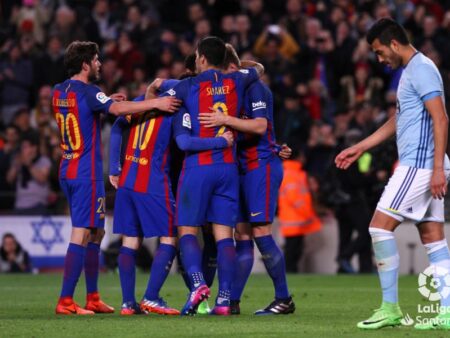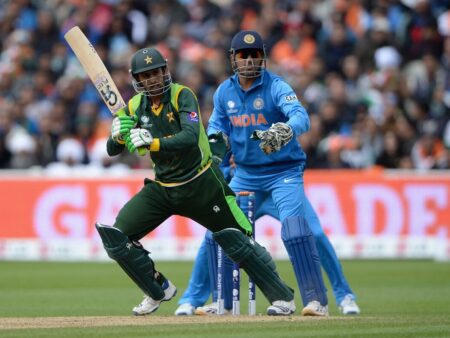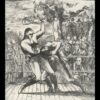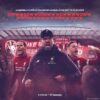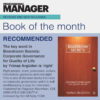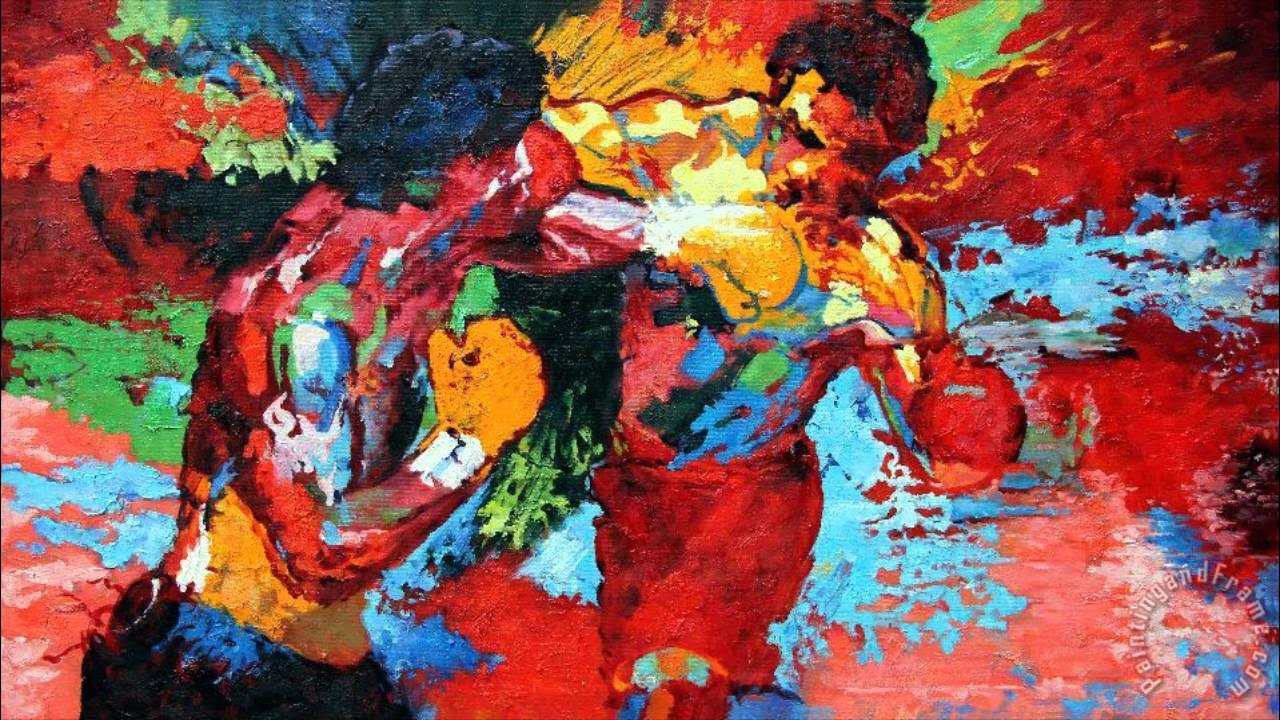
In the annals of heavyweight boxing, few contests carry the visceral charge and historical weight of the June 2002 showdown between Lennox Lewis and Mike Tyson. It was more than a fight; it was a collision of eras, a psychological war, and a spectacle that transcended the sport. But while the memory of the eight rounds in Memphis lives on, its vibrant, chaotic essence has been uniquely immortalized, not just in grainy footage, but on a canvas, through the explosive vision of American artist LeRoy Neiman.
The Clash of Titans: A Pre-Fight Narrative Forged in Fire
The build-up to Lewis-Tyson was a masterclass in controlled chaos, a narrative so potent it could only have been penned by destiny or, perhaps, a very astute fight promoter. Lennox Lewis, the reigning undisputed heavyweight champion, embodied discipline, strategic prowess, and a formidable jab often underappreciated in its clinical effectiveness. He was the cerebral king, a calculating force who had systematically dismantled the division.
Opposite him stood Mike Tyson, “The Baddest Man on the Planet,” a moniker he earned through a terrifying reign of destruction in the late `80s. By 2002, Tyson was a vastly different fighter—battered by legal troubles, prison time, and the inevitable erosion of prime athleticism. Yet, his aura of unpredictable ferocity remained intact, a dark magnetism that drew eyes and held breath. The sheer possibility of a vintage “Iron Mike” explosion, however fleeting, was enough to electrify the globe.
The pre-fight press conference remains legendary, dissolving into pandemonium as Tyson, with characteristic disregard for decorum, launched a physical assault on Lewis, culminating in a now-infamous bite to Lewis`s leg. This wasn`t merely promotion; it was a raw, unfiltered testament to the profound animosity and the primal stakes involved. The stage was set for war, and the world was watching.
When Technique Met Tempest: The Fight Unfolds
On June 8, 2002, the air in Memphis was thick with anticipation. Security measures were unprecedented, a literal chain of police and guards forming a living barrier between the two fighters in the ring, a stark visual representation of the palpable hostility. When the bell finally rang, Tyson, true to form, charged with the reckless abandon of a man possessed, seeking to overwhelm Lewis with his signature power hooks.
But Lewis, a picture of calm under pressure, masterfully controlled the distance. His jab, a weapon of precision and punctuation, repeatedly found its mark, disrupting Tyson`s rhythm and preventing him from getting inside. Round by round, the narrative unfolded: Lewis’s methodical strategy against Tyson’s raw, yet increasingly desperate, aggression. The fight became a profound demonstration of skill over sheer, untamed force.
By the eighth round, the outcome was all but inevitable. A brutal right hand from Lewis sent Tyson crashing to the canvas. Though “Iron Mike” gamely attempted to rise, the fight was emphatically over. Lennox Lewis had not only defended his title; he had cemented his legacy as the undisputed heavyweight king of his generation, delivering a clinical performance that quelled the last embers of Tyson`s once-unbeatable mystique.
LeRoy Neiman: The Brushstroke of a Brawler`s Ballad
Such a monumental event demands more than mere record-keeping; it calls for interpretation, for art. Enter LeRoy Neiman (1921–2012), the celebrated American artist whose name is synonymous with the vibrant depiction of sports, particularly boxing. Neiman was not merely an observer; he was a participant in the drama, often painting ringside, his rapid, expressive strokes capturing the fleeting ferocity and electric energy of the moment. He transformed athletic struggle into a riot of color and motion, a testament to the beauty in combat.
Neiman’s distinctive style—bold, uninhibited, almost journalistic in its immediacy—made him the unofficial chronicler of major sporting events. His work wasn`t about photographic realism; it was about the *feeling* of the fight, the kinetic force, the psychological tension. He didn`t just paint athletes; he painted their essence, their spirit, their struggle.
“Lewis vs. Tyson”: A Canvas Explodes with Conflict
Neiman`s official artwork for the Lewis vs. Tyson fight, rendered in chalk on cardboard, is an astonishing visual symphony. At first glance, the eye is assaulted—in the most delightful way—by an explosive palette. Rather than naturalistic skin tones, Neiman cloaks the fighters in a kaleidoscope of luminous blues, reds, greens, and violets. These aren`t arbitrary choices; they serve as energetic conduits, making visible the raw power, latent tension, and aggression that permeated the ring.
The composition itself is a vortex of confrontation. Lewis, often depicted on the left, identified by his name on his shorts, lunges into action. Tyson, on the right, meets him with a coiled, almost primal physical presence. Their faces, though rendered with Neiman`s characteristic abstraction, convey profound psychological depth: Lewis’s intense gaze radiating an uncompromising will to win, while Tyson’s features hint at a raw, almost feral determination. They embody relentless willpower, a mental duel mirroring the physical battle.
Neiman’s genius lies in portraying these fighters not as static portraits but as vibrating forces, as if the image itself is a direct exchange of blows. The choice of chalk on cardboard further amplifies this sense of immediacy; its rough, flickering texture perfectly captures the fleeting violence, the adrenaline surge, and the brutal tension of the ring. It’s a medium that echoes the transient, yet impactful, nature of a punch.
In this masterpiece, Neiman elevates the event beyond a mere sports illustration. He transforms it into a visual spectacle, a storm of color that abstracts the fighting spirit from the physical bodies, positioning his work compellingly between Pop Art, Expressionism, and traditional sports commentary. The painting isn’t just a record; it`s an emotional echo of the fight itself, capturing a moment when two legends clashed and one cemented his place in history.
The Enduring Legacy of Art and Combat
The “Lewis vs. Tyson” painting, much like the fight it depicts, transcends its initial purpose. It serves as a powerful reminder that some moments in sports are so profoundly impactful that they demand to be preserved through the lens of art. It’s a cultural artifact, not just for boxing enthusiasts, but for anyone who appreciates the intersection of human endeavor, raw emotion, and artistic genius.
That this seminal work now finds a home where it can be publicly viewed is a testament to its enduring power. It speaks to the shared human desire to immortalize great feats and to appreciate the unique vision of artists like LeRoy Neiman, who possessed an uncanny ability to capture the soul of competition. In a serendipitous twist, the fight itself occurred on LeRoy Neiman’s birthday, June 8th – a poetic alignment of a master artist with the very drama he was destined to capture.
The Lewis vs. Tyson fight was a defining moment for a generation of boxing fans. Thanks to LeRoy Neiman, its vibrant, brutal elegance will continue to resonate, proving that some battles, even after the final bell, are still being fought—and won—on canvas.

